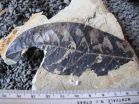(Press-News.org) CORAL GABLES, FL (October 21, 2010)--Researchers from the University of Miami (UM) and the University of Connecticut (UConn) have published a 2010 report on the American Jewish population, as part of a new North American Jewish Data Bank Report series.
The new report called Jewish Population in the United States-2010 shows a greater number of Jews in the U.S. than in Israel. While the article puts the total number of Jews in the U.S. at around 6.5 million, the authors recognize there may be some double counting in the methodology and believe the number to be fewer than 6.4 million.
Interestingly, the U.S. report contradicts the estimate that will appear in the World Jewish Population Report to be issued in the near future in the same report series, which will show 5.3 million U.S. Jews, explains Ira Sheskin, professor of Geography and Regional Studies at UM College of Arts and Sciences and lead author of this report.
"The article on the Jewish Population in the U.S. shows a greater number of Jews in the U.S. than in Israel, while the World Report will claim the opposite," says Sheskin. The difference is in the methodology. "While the World Report uses national studies for its estimate, the U.S. Report sums up estimates of the Jewish population in over 1,000 local Jewish communities to develop a national estimate," says Sheskin, who is also director of the Jewish Demography Project at the Sue and Leonard Miller Center for Contemporary Judaic Studies at UM.
The report was published by the Mandell L. Berman-North American Jewish Data Bank at the University of Connecticut, in coordination with the Association for the Social Scientific Study of Jewry (ASSJ) and Jewish Federations of North America (JFNA). The data collected previously made possible an analysis of the Jewish population by U.S. Congressional districts for the first time, explains Arnold Dashefsky, professor of sociology at UConn and co-author of this report.
"Each report that we have prepared, including reports for 2006, 2007, and 2008, is better than the previous one because we continue to add new scientific estimates and discover new concentrations of Jews in local communities," says Dashefsky, who is also director of the Center for Judaic Studies and Contemporary Jewish Life at UConn.
Other findings in the report include:
New Internet-based estimates of small Jewish communities that had not been included in previous reports
Vignettes of seven US communities: The Berkshires, MA; Broward County, FL; Cincinnati, OH; Hartford, CT; Middlesex County, NJ; Phoenix, AZ and Pittsburgh, PA.
Comparisons among local Jewish communities on four different criteria: percentage of persons in Jewish households in a community age 65 and over; percentage of adult children who remain in their parents' community when they establish their own homes; emotional attachment to Israel; and the percentage and number of Holocaust survivors and children of survivors.
Some community estimates show marked increases in population, mainly because the data had not been updated yearly. Philadelphia increased to 214,600 Jews from 206,100 Jews in 1997; and Portland, OR increased to 42,000 Jews from the former estimate of 25,500 Jews.
Other increases are reported as a result of new methodology. Orange County, CA shows an increase of 33 percent; Ocean County, NJ, a 36 percent increase; and Dutchess County, NY, a 138 percent increase.
Only two communities show significant decreases in Jewish population. Buffalo, NY decreased to 13,000 Jews from 18,500 Jews in 1995; and Dayton, OH decreased to 4,000 Jews from the former estimate of 5,000 Jews.
###
The data will be accessible to researchers via an online spreadsheet, which will allow Sheskin and Dashefsky to update information as new estimates are obtained. The report is available at: www.jewishdatabank.org
About the University of Miami
The University of Miami's mission is to educate and nurture students, to create knowledge, and to provide service to our community and beyond. Committed to excellence and proud of the diversity of our University family, we strive to develop future leaders of our nation and the world. www.miami.edu
END
The landscape of Central Africa 65 million years ago was a low-elevation tropical belt, but the jury is still out on whether the region's mammals browsed and hunted beneath the canopy of a lush rainforest.
The scientific evidence for a tropical rainforest at that time is weak and far from convincing, says paleobotanist Bonnie F. Jacobs at Southern Methodist University in Dallas.
Fossil pollen from Central and West Africa provide no definitive evidence for communities of rainforest trees at the beginning of the Cenozoic, says Jacobs, an expert in the paleobotany of Africa ...
The availability of highly nutritious forage is one of four factors linked to the presence of elk populations in western Oregon and Washington, according to a modeling study recently completed by scientists from the U.S. Forest Service's Pacific Northwest (PNW) Research Station. Findings from the two-year study will be used to update land management planning for the ecologically and economically important ungulate in the region.
"Habitat models like the one we developed are critical to managing elk populations, particularly since current management practices are based ...
OAK RIDGE, Tenn., Oct. 21, 2010 -- Tin may seem like the most unassuming of elements, but experiments performed at the Department of Energy's Oak Ridge National Laboratory are yielding surprising properties in extremely short-lived isotopes near tin-100's "doubly magic" nucleus.
Experiments performed with the exotic nucleus tin-101, which has a single neutron orbiting tin-100's closed shell of 50 protons and 50 neutrons, indicate an unexpected reversal in the ordering of lowest states in the nucleus. The finding appears to violate a standard scenario offered by the nuclear ...
Boston, Mass. - A cholesterol-lowering drug reduced the enlarged prostates of hamsters to the same extent as a drug commonly used to treat benign prostatic hyperplasia (BPH), report researchers at Children's Hospital Boston and their colleagues in the October issue of the Journal of Urology. Together, the drugs worked even better.
"We don't know the mechanism, but the results suggest to us that lowering cholesterol has the potential to reduce BPH in men," says senior author Keith Solomon, PhD, a biochemist, and member of the departments of Orthopaedic Surgery and Urology ...
At the heart of the method is a so-called quantum point contact (QPC). This is a narrow conductive channel in a semiconductor circuit. The scientists created a 70-nanometer narrow channel, about as wide as the wavelength of electrons in the semiconductor. The key is that only one electron at a time will fit through the channel, making possible extremely high-precision measurements of the electric current. As described in the current publication, this method was applied to photogenerated electrons for the first time ever.
In the experimental set-up it is not the sun, but ...
Beating the flu has always been tough, but it has gotten even more difficult in recent years. Two of the four antiviral drugs used to treat a nasty case of the influenza A virus no longer work.
Fortunately, scientists at the National High Magnetic Field Laboratory and Institute of Molecular Biophysics at Florida State University and researchers at Brigham Young University in Utah are close to understanding why these drugs have become less effective — and how new drugs might take their place. Their findings appear this week in the journal Science.
"Resistance to drugs ...
Madison, WI, October 21, 2010 – Researchers at the University of Florida Research and Education Centers and scientists at the South Florida Water Management District have published a report regarding the trends in water quality feeding into Everglades National Park. The report can be found in the September-October 2010 Journal of Environmental Quality, published by the American Society of Agronomy, the Crop Science Society of America, and the Soil Science Society of America.
The goal of the study was to provide insight regarding the variations in the quality of water ...
Two children, both age 3, enroll in publicly funded preschool. But they may have vastly different experiences: One child may attend preschool for 8 hours a day and be taught by a teacher with a bachelor's degree while the other child may be in preschool for only a few hours a day, under the supervision of a teacher with a 2-year degree. Why is there so much variability and are these programs meeting their potential for adequately preparing youngsters for school?
In a new report in Psychological Science in the Public Interest, a journal of the Association for Psychological ...
ANN ARBOR, Mich.---As Halloween approaches, tales of monsters and creepy crawlies abound. Among the most fearsome is the legendary beast known as the chupacabras.
But the real fiend is not the hairless, fanged animal purported to attack and drink the blood of livestock; it's a tiny, eight-legged creature that turns a healthy, wild animal into a chupacabras, says University of Michigan biologist Barry OConnor.
The existence of the chupacabras, also known as the goatsucker, was first surmised from livestock attacks in Puerto Rico, where dead sheep were discovered with ...
USA Volleyball is joining forces with its newest partner to offer the 2012 Ludus Tours Sport Development Grants to volleyball clubs for the development or enhancement of programming for boys, ages 14 years or younger.
Any USAV-sanctioned volleyball club that is in good standing with their Region and USAV is eligible to apply for one of five $1,000 grants. Only one club per USAV region will be awarded a grant. Grant funds must be used to develop new programming or enhance existing programming for boys, ages 14 years or younger. It is strongly suggested that the funds ...



